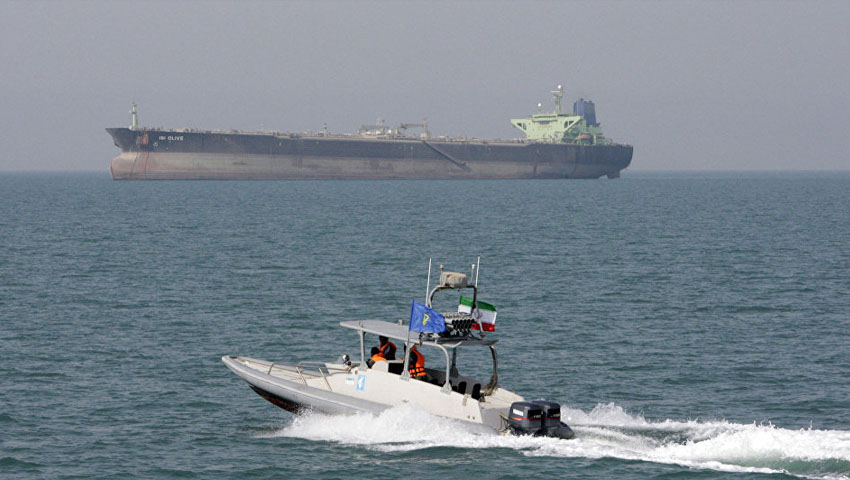Following the shooting down of an American high altitude, long endurance drone over the Gulf of Oman, tensions are taking a step up as two implacable enemies face off across one of the world’s most strategically and economically vital waterways.
To continue reading the rest of this article, please log in.
Create free account to get unlimited news articles and more!
Like scorned lovers, the tensions between the US and the Islamic Republic of Iran have long simmered since the Iranian Revolution in 1979 – while periodically tensions boil over, the continuing pursuit of nuclear power by Iran has emboldened the nation to continue its support of terrorist organisations, including Hamas and the Palestinian Liberation Organisation (PLO) among others throughout the Middle East.
Supported by oil and natural gas wealth and relationships with larger great powers, namely Russia and China, Iran is often cited as directly challenging the US-led post-World War Two order and a direct threat to the spread of economic and political freedoms. Iran is also strategically located at the heart of the world's largest oil fields – the strategically critical Strait of Hormuz, a 65-kilometre-wide waterway linking the Persian Gulf and Gulf of Oman, is responsible for a third of the world's liquefied natural gas and approximately 20 per cent of total global oil consumption.
While the Obama administration pursued a radically different approach to relations between the two nations compared with presidents of the past, the regime has continued to challenge the US and allies in the region, often bringing the region to the brink of another conflict and the world to the edge of economic collapse in the event of plummeting oil production.
The election of Donald Trump in 2016 and the appointment of hawkish National Security Adviser John Bolton signalled an end to the seemingly more conciliatory relationship between the two adversaries – marking a return to the more confrontational style of the preceding Reagan and Bush administrations and has seen a significant rise in the tensions.
In recent months, the tensions between Iran and the West more broadly have begun to bubble over – particularly following a series of attacks on oil and natural gas tankers in the Persian Gulf and the Gulf of Oman, threatening the global supply of liquid fuel and thus the global economy. This has prompted a resurgence of US military presence in the region, including:
- The USS Abraham Lincoln carrier strike group;
- Four B-52H Stratofortress strategic bombers;
- Patriot Missile batteries; and
- An additional 5-10,000 US troops in support of the existing 60-80,000 US troops as part of US Central Command (USCENTCOM).
Iran, in response, has begun a series of re-deployments and mobilisation of both regular Iranian Army and Revolutionary Guard forces towards the Persian Gulf and Gulf of Oman to enhance the existing air defence, maritime interdiction and ground forces to hinder any potential US retaliation. This mobilisation has drawn the attention of the US, with the superpower conducting a series of reconnaissance over flights particularly following allegations of an Iranian attack on two tankers in the region.
Released Pentagon footage apparently shows naval forces of the Iranian Islamic Revolutionary Guard Corps (IRGC) involved with the attack of the Japanese-owned Kokuka Courageous tanker, which has drawn repeated denials from the Iranian regime and draw renewed wrath from the US. Despite this, US Secretary of State Mike Pompeo has moved to reassure the world that the US President wanted to do "everything he can" to avoid conflict.
The President's commitment to avoiding conflict has been tested with the successful shooting down of a US Navy RQ-4A Global Hawk high altitude, long endurance intelligence, surveillance and reconnaissance (ISR) drone in what the US has condemned as an "unprovoked attack" by the IRGC, triggering, at this point, a war of words.
US Air Force Lieutenant General Joseph Guastella responded to Iranian claims of self-defence, stating, "Iranian reports that this aircraft was shot down over Iran are categorically false. This dangerous and escalatory attack was irresponsible and occurred in the vicinity of established air corridors between Dubai, UAE and Muscat, Oman, possibly endangering innocent civilians."
Responding, Iran's Foreign Minister Javad Zarif fired back, stating that the US drone was responsible for illegally entering Iranian airspace and that Iran remained committed to peace, stating, "We don’t seek war, but will zealously defend our skies, land and waters."
Further compounding the rising tensions are claims made by Tehran that it would boost its stockpile of enriched uranium beyond the limits agreed to in 2015 as part of the Obama administration's nuclear deal, drawing the ire of the US military and Israel. Nevertheless, while President Trump has so far refrained from unleashing the US military, his tweets have served to put the rogue power on notice.
"Iran made a very big mistake. I find it hard to believe that it was intentional, I think that it could have been someone who was loose and stupid that did it....but it was a very foolish move, I can tell you that," US President Trump tweeted in response.
As tensions continue to mount and events unfold, let us know your thoughts in the comments section below, or get in touch with
Stephen Kuper
Steve has an extensive career across government, defence industry and advocacy, having previously worked for cabinet ministers at both Federal and State levels.

 Login
Login








